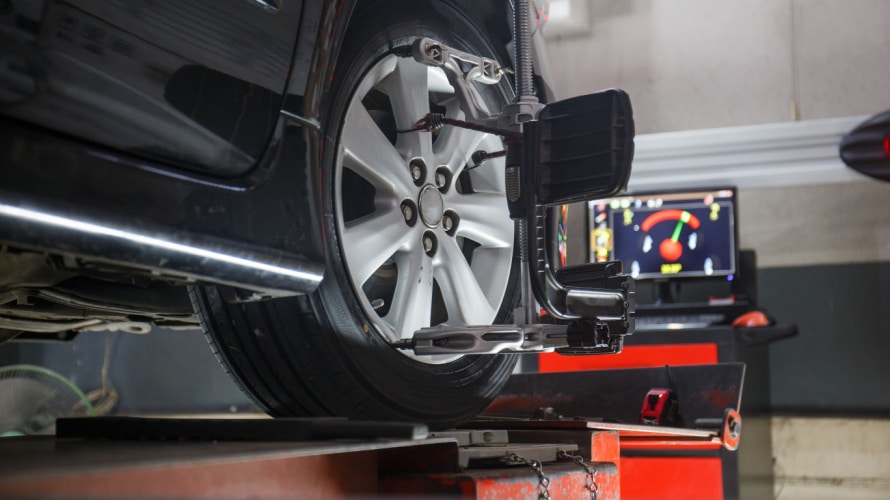The Science Behind Vehicle Alignment: Ensuring Safety and Stability on the Road
March 4, 2024
Uncategorized

Vehicle alignment is a critical aspect of vehicle maintenance that often goes unnoticed until issues arise. A vehicle alignment ensures your vehicle’s wheels are correctly positioned, providing a smoother ride, and enhancing driving safety and stability.
In this blog post, we will explain the science behind vehicle alignment and why it is important for both your safety and the lifespan of your tires.
What is Vehicle Alignment?
Vehicle alignment, which can also be called wheel or tire alignment, means making sure the wheels of your vehicle are correctly positioned. The aim is to have the wheels point the right way, so they are parallel to each other and at right angles to the road. When your wheels are correctly aligned, your vehicle drives straight when you keep the steering wheel centered.
Proper alignment is critical because it profoundly impacts your vehicle’s performance and the safety of your ride. When correctly aligned, your vehicle drives straight, reduces tire wear and maintains stability. Conversely, misalignment can lead to uneven tire wear, reduced contact with the road, and decreased safety.
The Science Behind Proper Alignment
There are three critical alignment angles: camber, caster, and toe.
Camber: Camber refers to the angle at which the wheels tilt inward or outward when viewed from the front of the vehicle. A slight negative camber (tilting inward) often improves stability and handling during cornering.
Caster: Caster is the angle at which the steering axis intersects the ground. A proper caster angle ensures that the wheels return to the center position when you release the steering wheel, enhancing stability.
Toe: Toe alignment determines whether the front of the tires points inward or outward when viewed from above. Proper toe alignment ensures the tires are parallel and reduces the risk of uneven tire wear.
When these alignment angles are correctly adjusted, your vehicle maintains optimal stability, and the tires make even contact with the road surface. This results in a safer and more controlled driving experience, especially during sudden maneuvers or adverse road conditions.
Signs of Misalignment
Recognizing the signs of misalignment is crucial for timely intervention and preserving your tires and vehicle. Common signs include:
Vehicle Pulling: If your vehicle consistently pulls to one side while driving on a straight road, this is a clear sign of alignment issues.
Uneven Tire Wear: Misalignment can cause your tires to wear unevenly, leading to premature tire replacement and reduced lifespan.
Off-Center Steering Wheel: An off-center steering wheel suggests an alignment issue when driving straight.
Reduced Stability: Misalignment can make your vehicle feel less stable and more difficult to control, especially when driving at high speeds or turning.
Addressing these signs promptly by getting your alignment checked and adjusted as needed will improve your driving experience and save you money by reducing tire wear and enhancing fuel efficiency.
Precision Alignment at TIRECRAFT
At TIRECRAFT, we are committed to ensuring the safety and stability of your vehicle through precision wheel alignment services. Our expert technicians utilize state-of-the-art alignment equipment and technology to measure and correct your vehicle’s alignment angles accurately.
Our advanced alignment machines employ laser or camera technology to assess the current alignment status of your vehicle. Once the measurements are taken, our skilled technicians can precisely adjust the camber, caster, and toe angles, ensuring that your wheels are aligned to your vehicle’s manufacturer specifications.
In conclusion, vehicle alignment is not just about keeping your car driving straight; it is about safety, stability, and maximizing the lifespan of your tires. Recognizing the signs of alignment issues and entrusting your vehicle to TIRECRAFT professionals, who use advanced technology for precision alignment, can make a difference in your driving experience. Do not overlook the science behind vehicle alignment—prioritize it for a safer and more enjoyable journey.
Back

